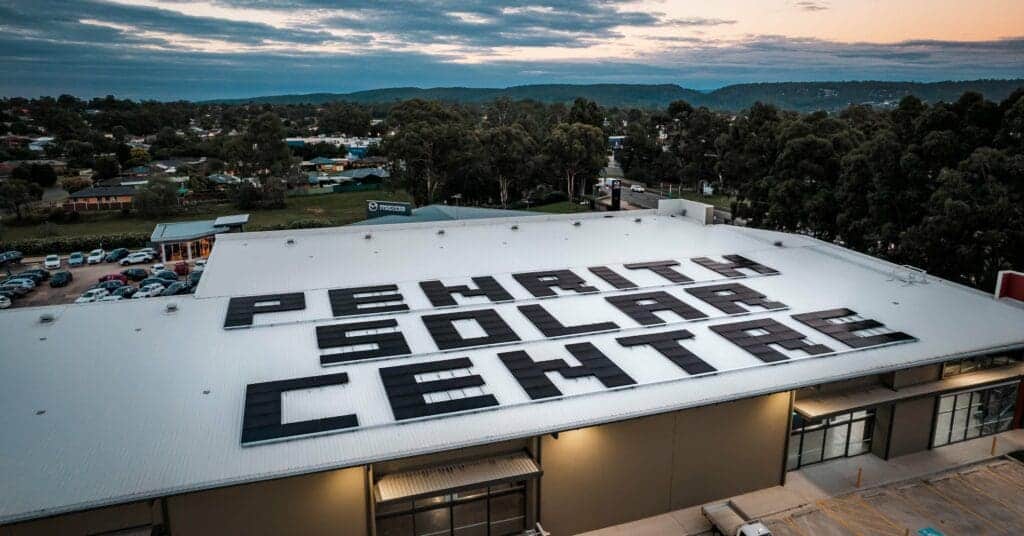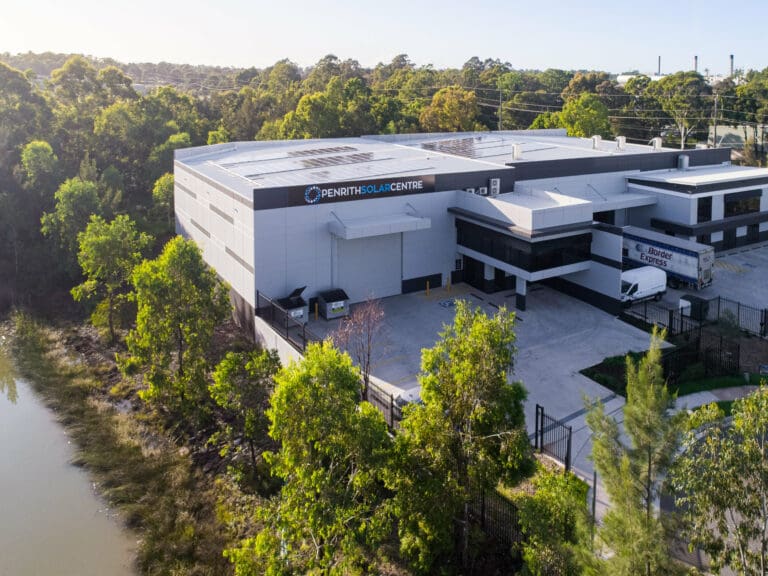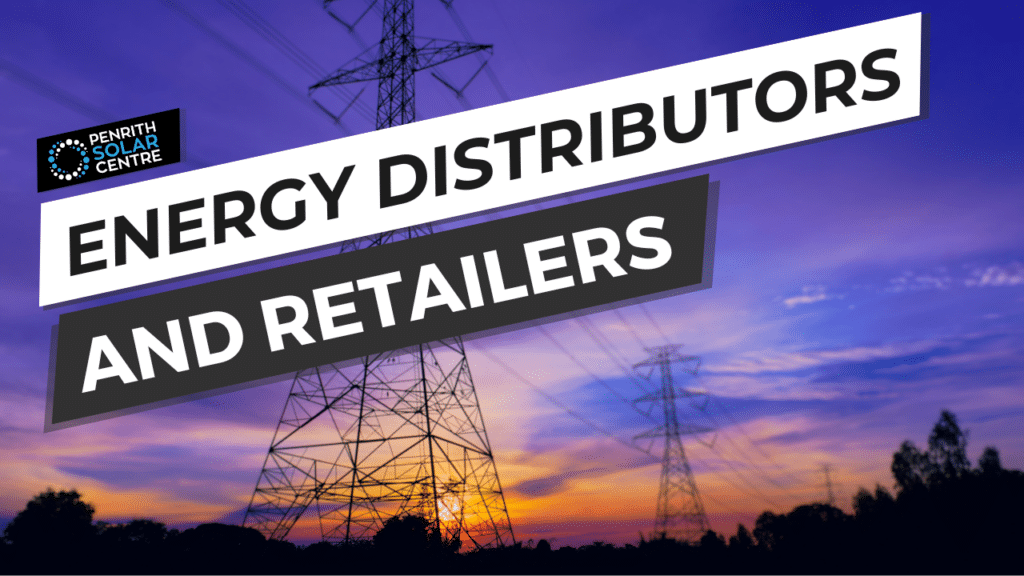
We talk about the electrical grid a lot in these articles. It’s a massive network that provides utilities to Australians. How does all this relate to you while you are shopping for a solar system?
From monitoring your monthly bill to understanding who to call during an outage, manoeuvring your way through the different terms and options can be confusing. Customers who understand the relationship between retailers and distributors will be more confident that they’re making the right decisions regarding their services.
At Penrith Solar Centre, we want to help you feel more confident during the decision-making process while you’re shopping for solar. Energy distributors and energy retailers are different entities and knowing what they each do is the first step towards mastering the relationship your solar system will have with the grid. So, let’s look at the difference between distributors and retailers and the roles they play in the energy supply chain.
In this article, you will learn:
- What’s an Energy Distributor?
- What Does an Energy Distributor Do?
- Who Are the NSW Energy Distributors?
- What’s an Energy Retailer?
- What’s an Energy Retailer Do?
- Who Are the NSW Energy Retailers?
By the end of this article, you’ll have a comprehensive understanding of the differences between these two services and how they apply to you. Play on!
What’s an Energy Distributor?
In Australia, Distribution Network Service Providers (DNSP), commonly known as distributors, maintain the electrical grid. This includes the poles, wires, stations, and substations that all contribute to getting electricity to homes.
New South Wales has three distributors—Ausgrid, Essential Energy, and Endeavour Energy—each function on a separate network. The networks are divided by region. Ausgrid is the eastern part of Sydney and extends up to Newcastle, Endeavour Energy covers the western suburbs around Sydney and extends south beyond Wollongong, and Essential Energy is the DNSP for the rest of New South Wales.
What Does an Energy Distributor Do?
Electricity distributors are responsible for constructing and maintaining the infrastructure (of poles, wires, stations, etc.) that distributes electricity to homes and businesses throughout New South Wales.
Understanding the distributor’s role requires a bit of understanding of the Australian energy industry. In simple terms, most electricity comes from large, centralised generators. These centralised generators are where resources like fossil fuels or more energy-conscious alternatives like wind turbine farms produce electricity.
The generated power is transformed into high voltage electricity and sent over long distances through transmission networks. The transmission network is all the wires and towers and poles (though they can be underground as well) that deliver power across the DNSP grid.
In the journey from fossil fuels to your home, the high-voltage electricity needs to be converted into a lower voltage to be usable in a home or business. Within the DNSP grid are transformer(s) and/or substations. Their main function is to convert (transform, if you will) electricity from high voltage down to low voltage, usable in your home.
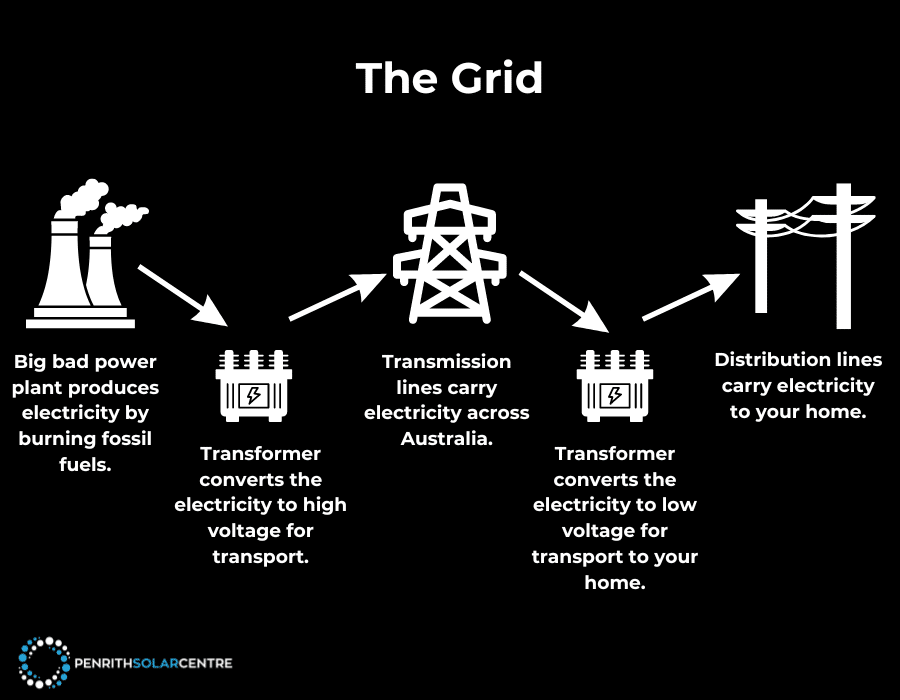
Common transformers in the network in Kilo-Volt-Amperes (kVA) are:
330kVA down to 132kVA, 132kA down to 66kVA, 66kVA down to 33kVA, 33kVA down to 11kVA, and finally 11kVA down to 230/400 volts.
The distributor maintains the infrastructure that converts and delivers this electricity. If you encounter a power outage or damage to energy infrastructure, such as fallen power lines, your electricity distributor is who you call to repair it.
What NSW DNSPs Do:
- Manage the electricity infrastructure.
- Repair the network (poles, wires, and transformers) when necessary.
- Restore power when there’s an outage.
- Manage the streetlights
What NSW DNSPs Don’t Do:
- Send you an electricity bill.
- Create or repair individual residential connections.
- Provide metering services.
New South Wales is a little different from other states in Australia when it comes to connecting homes to the grid. The DNSP doesn’t do it. Instead, a customer hires out an Accredited Service Provider (ASP), who is an accredited electrician or company. An ASP does all the work to design, construct, or install components that connect a customer’s home to the electrical grid.
Who Are the NSW Energy Distributors?
Ausgrid:
The Ausgrid Network delivers power to 1.7 million customers. Their network serves downtown Sydney and its eastern suburbs, extending north to Newcastle, and reaching inland areas like Muswellbrook, Barry, and Merriwa.
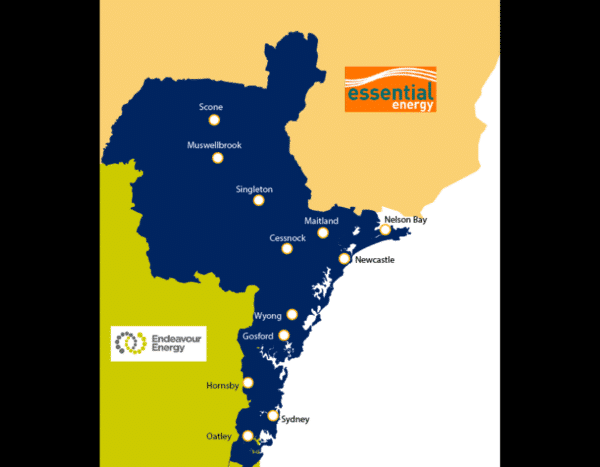
It used to be owned by the government. In 2016, Ausgrid underwent a change in ownership and transitioned to majority ownership by private investor groups. Ausgrid claims that — despite this shift — it has kept focused on safety and reliability while “anticipating the rise of decentralized renewable energy generation.”
Reach out to Ausgrid (if you’re in their region) for reporting outages, damage to electrical network equipment (like poles, wires, and transformers), and faults in streetlights. Customers can also contact Ausgrid for assistance in trimming trees that are getting dangerously close to power lines.
Endeavour Energy:
Endeavour Energy is adjacent to the Ausgrid network on its south and west borders. It delivers power to approximately 2.4 million individuals residing in households and businesses across Sydney’s western suburbs, the Blue Mountains, Southern Highlands, Illawarra, Wollongong, and the South Coast.
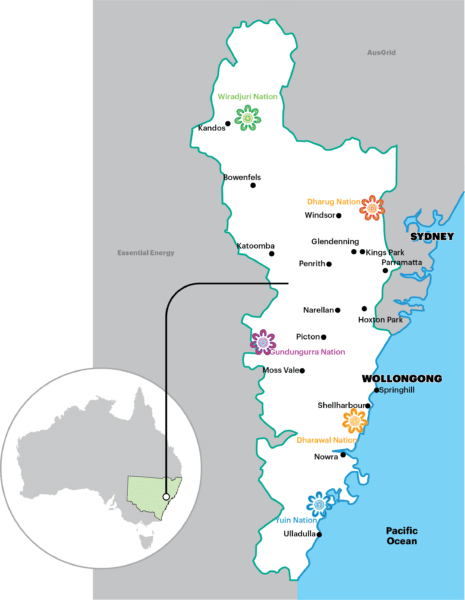
The Endeavour Energy network comprises 416,000 power poles and streetlight columns, along with 186 major substations and 32,000 distribution substations, all interconnected by an extensive network of nearly 50,000 kilometres of cables — larger than the distance between Sydney and London, round trip. Ownership of the company is divided, with a 50.4% stake held by an Australian-led consortium of investors and the remaining 49.6% owned by the NSW government.
For those residing on the Endeavour Energy network, it is the primary point of contact for reporting power outages, malfunctioning streetlights, fallen power lines, and any damage to network assets.
Essential Energy:
Essential Energy covers an expansive 95% of rural New South Wales and small portions of south-west Queensland. Notable urban centres served by the Essential network include Byron Bay, Coffs Harbour, Port Macquarie, Tamworth, Dubbo, Bathurst, and Wagga Wagga.
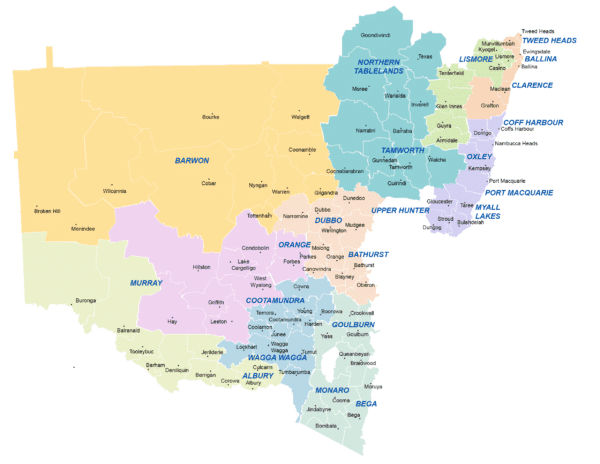
Beyond being a conventional “poles and wires” entity, Essential Energy distinguishes itself by initiating the “Essentials Communities Program.” This program actively offers funding opportunities to communities within the Essential network area. Essential Energy actively contributes to regional community development by supporting local halls and providing sponsorships to community groups striving to make a positive impact.
What’s an Energy Retailer?
Retailers send you your monthly utility bill. While you can’t choose your distributor, you certainly can choose your retailer. Consumers have some control over the rate they pay for electricity. Home and business owners can shop around a bit and compare different retailers to determine which price works best for them. There are also different options available to you depending on your situation, such as variable or fixed-rate energy plans.
When the retailer is creating your bills each month, they include a small percentage to be given to the distributor. In the words of The Godfather Part 2, “Don Fanucci must wet his beak.” In essence, you pay both distributor and supplier out of your monthly bill to get power to your building. When the power goes out, you call your distributor. If you find an issue on your bill, you call your supplier.
What’s an Energy Retailer Do?
An energy retailer buys electricity at a wholesale price and sells it to customers who own homes or businesses (really, anyone within a region who needs electricity). The retailer connects customers to the electrical grid and as mentioned above, handles the service and billing.
The big energy retailers earn their money by marking up the price of electricity. They make more money when you use more electricity and — obviously – when your bills are higher as a result.
Enter solar.
If you’re interested in learning how solar can wrangle control of your electricity back into your hands, you might want to check out the following article titled, What Is Solar Energy? How It Works, How to Use It, and Pros & Cons.
You’ll want to make sure that you are on the best electricity plan for your needs. In addition to what it will cost to import energy from the grid for your home, you’ll also want to investigate whether or not a retailer offers a feed- tariff (when your solar system overproduces electricity, you can sell it back to the grid for pennies per kilowatt hour). Some retailers offer a feed-in tariff, and some don’t.

Contact as many energy retailers as you can to find out what plans and discounts are available. Keep track of when your deal expires and check whether there is a better electricity plan for you. They do like to offer an introductory price that changes over time.
Who Are the NSW Energy Retailers?
There are simply so many.
Too many, in fact, to list here. If you’re interested in finding out where you can get the most economical rate from an energy retailer, you can find a service like comparethemarket.com.au or something similar – the internet is full of sites that help you shop around for the least expensive rate.
It’s a really good idea to spend some time looking at individual retailers too – study their individual websites rather than just relying on a comparison tool by a third party as rates and incentives are subject to change, sometimes rapidly.
Here are a few questions you might want to start with as you shop around:
1. What new deals and rates for solar do you have?
2. What are the advantages and disadvantages of any new offers for me?
3. What solar feed-in tariffs are available?
4. Will I receive credits on my electricity bill if I do not use all the solar energy produced by the panels?
5. How will solar affect my current electricity rates? Will I be charged a higher rate when I connect to solar?
6. What are the billing/payment periods?
7. Are there any fees or penalties for closing my account if I choose another retailer?
If you’re interested in learning a bit about our preferred energy retailer, Nectr, and why we like them so much, you might want to check out the following article titled, Common Questions About Interest-Free Solar.
Energy Distributors and Energy Retailers and You: Wrapping Things Up
Now you know the difference between an energy distributor and an energy retailer. They each have an influence on how electricity gets to and from your home in relation to the electrical grid. With this understanding, making choices around your bill – particularly when it comes to what solar equipment you’ll want to invest in – should be easier.
At Penrith Solar Centre, we believe that informed customers are happier customers. With a little education about how the grid works, you’ll be empowered to get the best solar system for your unique energy needs.
If you’re interested in learning a little bit more about how the grid works with solar systems, you might want to check out the following article titled, What is a Virtual Power Plant (VPP)?
